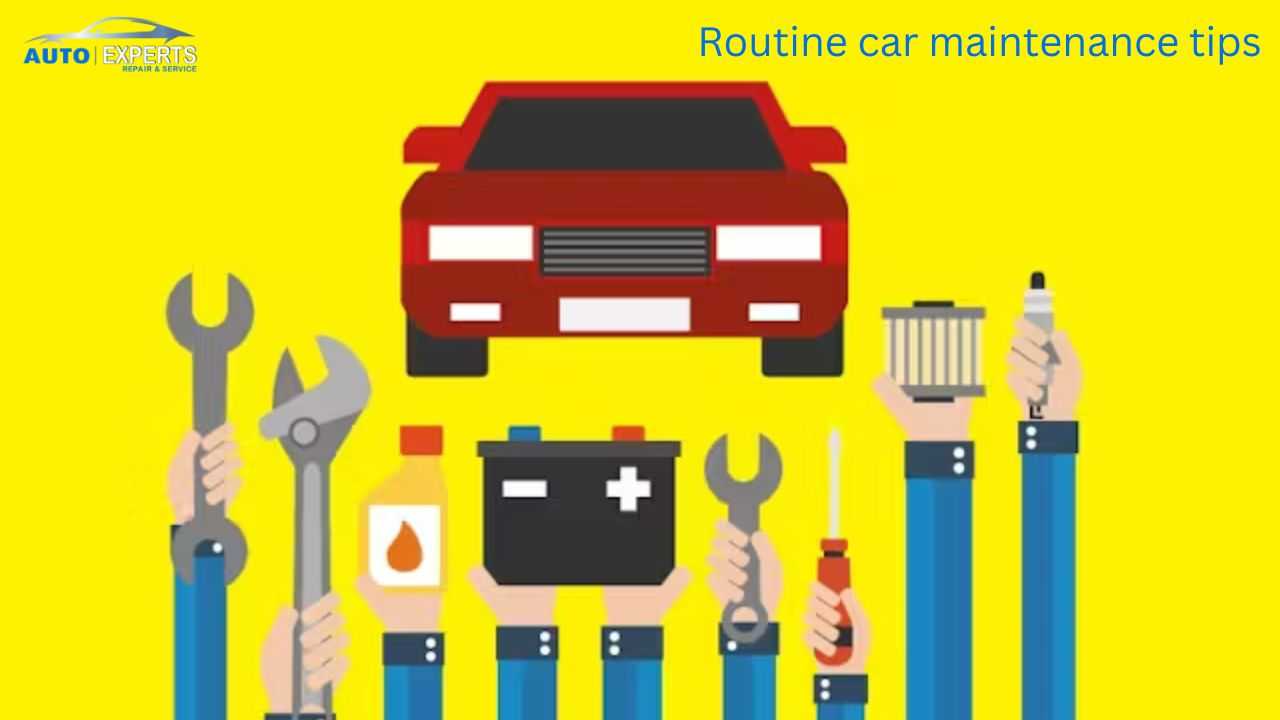Maintaining your car is essential for ensuring its longevity and performance. Regular upkeep not only helps you avoid unexpected breakdowns but also saves money in the long run. This article will provide you with straightforward, practical tips for routine car maintenance, helping you keep your vehicle in top condition.
1. Regular Oil Changes
Oil is the lifeblood of your car’s engine, lubricating moving parts and reducing wear and tear. Over time, oil breaks down and becomes less effective, leading to increased friction and potential engine damage. To prevent this, change your oil regularly, following the manufacturer’s recommendations—usually every 3,000 to 5,000 miles.
Tip: Always check the oil level between changes. If it’s low, top it off to avoid potential engine problems.
2. Check Tire Pressure and Tread
Properly inflated tires are crucial for safe driving and fuel efficiency. Underinflated tires can lead to poor handling, reduced fuel economy, and increased wear. Overinflated tires, on the other hand, can result in a harsher ride and uneven tread wear.
Tip: Use a tire pressure gauge to check your tires at least once a month. Ensure they are inflated to the recommended level, which can usually be found in your vehicle’s owner manual or on a sticker inside the driver’s side door.
In addition, regularly inspect the tire tread for signs of wear. Uneven tread wear might indicate alignment issues, which should be addressed promptly.
3. Replace Worn Out Wiper Blades
Clear visibility is essential for safe driving, especially in bad weather. Worn-out wiper blades can leave streaks or fail to clear the windshield properly, compromising your ability to see.
Tip: Replace your wiper blades every six months to a year, or as soon as you notice a decline in performance. Also, keep your windshield washer fluid topped up.
4. Inspect and Replace Air Filters
Your car’s air filters keep dirt and debris from entering the engine and cabin. Over time, these filters can become clogged, reducing engine efficiency and air quality inside the vehicle.
Tip: Check your air filters every 12,000 to 15,000 miles or as recommended by your vehicle’s manufacturer. Replace them if they appear dirty or clogged.
5. Monitor Your Brakes
Brakes are one of the most important safety features in your car. Regularly checking them ensures they function properly when you need them most.
Tip: Listen for unusual sounds, such as squealing or grinding, which may indicate worn brake pads. Also, pay attention to any changes in how the brake pedal feels. If it’s spongy or takes longer to stop, have your brakes inspected immediately.
6. Keep an Eye on Fluid Levels
Your car relies on various fluids—coolant, transmission fluid, brake fluid, and power steering fluid—to operate efficiently. Low or dirty fluids can lead to serious mechanical problems.
Tip: Regularly check all fluid levels and top them off as needed. If you notice any leaks or a rapid decrease in fluid levels, have your car inspected by a professional.
7. Test Your Battery
A dead battery can leave you stranded, so it’s important to keep it in good condition. Batteries typically last three to five years, but their lifespan can be affected by factors like climate and driving habits.
Tip: Test your battery’s charge regularly, especially before long trips or in extreme weather conditions. Clean any corrosion from the battery terminals and ensure the connections are secure.
8. Examine the Belts and Hoses
Belts and hoses play a vital role in your car’s operation, from powering the alternator to circulating coolant. Over time, they can wear out, crack, or break, leading to engine damage or breakdowns.
Tip: Inspect belts and hoses regularly for signs of wear, such as cracks, fraying, or leaks. Replace any damaged parts as soon as possible to avoid costly repairs.
9. Regularly Inspect Lights
Properly functioning lights are essential for safe driving, allowing you to see and be seen. This includes headlights, brake lights, turn signals, and interior lights.
Tip: Check all your lights regularly, and replace any burnt-out bulbs. If your headlights seem dim, consider cleaning the lenses or upgrading to brighter bulbs.
10. Keep Your Car Clean
Regular cleaning is not just about keeping your car looking good; it also helps protect the paint and interior from damage. Dirt, salt, and other contaminants can cause rust and wear over time.
Tip: Wash your car regularly, especially in winter, to remove road salt. Wax your car every few months to protect the paint and keep it looking shiny. Don’t forget to clean the interior as well to maintain a comfortable and pleasant driving environment.
11. Schedule Regular Professional Maintenance
While DIY maintenance is important, there are some tasks best left to the professionals. Regular professional maintenance, such as tune-ups and inspections, can help identify potential problems before they become serious.
Tip: Follow your vehicle’s recommended maintenance schedule, which can be found in the owner’s manual. Regular check-ups by a certified car mechanic will keep your car in top shape and help you avoid unexpected repairs.
Conclusion
Routine car maintenance is key to keeping your vehicle running smoothly and safely. By following these simple tips, you can extend the life of your car, improve its performance, and save money on repairs. Remember, taking care of your car is an investment in your safety and the longevity of your vehicle.

